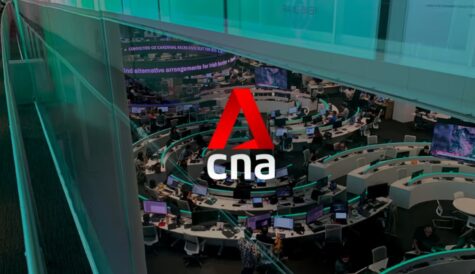
After more than 40 years of operation, DTVE is closing its doors and our website will no longer be updated daily. Thank you for all of your support.
International affairs
Identifying which markets to prioritise and knowing when to invest in localisation are crucial to success for international brands.
When it comes to assessing international opportunities, channel providers currently face the twin challenges of the recession and market saturation in some territories. “The European market is crowded but consolidation is in view,” says Jean-Thierry Augustin, managing director, distribution and development, Eurosport. “In uncertain times people focus on packages with well known brands. Operators know this, and from what I see, there is a tendency which starts to distribute simplified offers with strong and compelling content.”
Louise Cottrell, vice-president, affiliate sales, Chello Zone, says distribution opportunities must be considered on a case-by-case basis. Chello Zone has a global business spanning Europe, the Middle East, Africa and Asia, with a strong established business in central and eastern Europe. The company recently launched pre-school children’s channel JimJam in Asia and is looking to increase its distribution throughout the region. Zone Reality and Extreme Sports Channel launched in Greece last year, a market that Cottrell identifies as a growth opportunity: “We are also looking at possible new opportunities across the Middle East region and Africa for all our brands. With so much potential development in Africa at the moment and new platforms launching, we believe there are numerous great opportunities for Zone in this market.”
 For news channel France 24, Asia and North America are key markets. “We have excellent results in audience and awareness in sub-Saharan Africa, in the Maghreb and are constantly increasing in Europe. Now our main goal is to develop our distribution in Asia and in America,” says Philippe Rouxel, vice-president, worldwide distribution.
For news channel France 24, Asia and North America are key markets. “We have excellent results in audience and awareness in sub-Saharan Africa, in the Maghreb and are constantly increasing in Europe. Now our main goal is to develop our distribution in Asia and in America,” says Philippe Rouxel, vice-president, worldwide distribution.
EMEA and Latin America in particular remain strong growth opportunities for Greg Ricca, president and CEO, Discovery Networks International. According to Ricca, Discovery’s international audience has increased 23% year-on-year while distribution has grown by 8% so far this year. “EMEA and Latin America remain the biggest drivers of growth in the short term, but we anticipate strong growth across all the regions over the next few years,” he says. In 2009, Discovery launched 40 new channels around the world, notably in Latin America with the launch of HD Theater and across Europe with the launch of Investigation Discovery.
Sean Cohan, senior vice-president, international, A&E Television Networks, agrees that Latin American and Europe are growth markets, but says it is important to maintain a balance between new territories and launches of new channels in existing territories. “There are several emerging markets out there like Brazil and central and eastern Europe where there are races of sorts to launch services,” says Cohan. “While it is key to have a presence in these territories, in an economically responsible way, I think it is also key to build on successful bases in existing territories and to broaden our offerings to further engage existing viewers and to attract new viewers.”
For Dean Possenniskie, general manager and senior vice-president EMEA, BBC Worldwide, however, expansion into new territories currently takes priority. “From our point of view I think it’s more important to launch into new markets,” says Possenniskie. “We’re still growing our reach across EMEA, certainly central and eastern Europe. In markets like Russia or Romania, there are still real growth opportunities and we’re heavily focused on these markets.” He says that BBC Worldwide is also working on launching into the major western markets, with ambitions to launch in Italy, France and Germany in 2010, following successful launches in Poland, South African and most recently Scandinavia. “We’ve had very successful sales there in the past in terms of our content and programming, and we’ve conducted research in those markets in the last four to six months, which has come back positive,” he says.
However, expansion for its own sake is something channel providers should avoid, according to Linda Jensen, CEO of HBO Central Europe. “Everyone is in different positions with their own brands and markets pose different opportunities depending on the competitive landscape. The first goal must be the generation of business – e.g. current or future cash – and not some physical presence test in a market or on a particular platform.”
Localisation
Channel providers must also decide how far to commit themselves to particular territories. Channel localisation can mean a number of things. Local-language feeds, for example, are nowadays widely viewed as something of a sine qua non. Discovery already offers more than a hundred localised feeds internationally, including ten new feeds in EMEA over the past two years in key growth areas including central Europe and Russia. Local-language versioning is as far as many channel providers in areas such as natural history or news need to go. For news channels, their ‘international’ nature is a key selling proposition. “As France 24 is firmly rooted in a multilingual strategy, we don’t feel too concerned by geo-localisation. Whatever the place, whenever, France 24’s strategy is to be accessible,” says Rouxel.
For other channel providers, however, sourcing local content is also a key part of their overall strategy. “Our genres – history, people, crime – are very personal and local in nature,” says AETN’s Cohan. “We believe, in addition to language-versioning, that locally acquired and produced content is critical to success.”
Sometimes, localisation involves acquiring certain rights for certain markets. In the sports arena, for example, Eurosport acquires German Bundesliga rights for northern and eastern Europe, British Superbikes for the UK, and so on. As part of its editorial strategy, Eurosport hires local language-commentators – for the most part local athletes and experts – meaning its channels combine core pan-European content with a local flavour. With Eurosport 2 the broadcaster has been able to develop more regionalised offers (involving multi-country or, in some cases, country-specific programming) based on the acquisition of local rights in certain markets. For example, Eurosport 2 acquired English Premiere League rights for Romania and Hungary in 2007, which enabled it to launch a regional offer in these markets. “This experience validated our business model and we decided to carry this strategy one step further by acquiring this year Bundesliga rights for northern and eastern Europe,” says Augustin.
“EMEA and Latin America remain the biggest drivers of growth in the short term, but we anticipate strong growth across all the regions over the next few years.”
Greg Ricca, Discovery
Commissioning local content is one step further than making local acquisitions. However, this need not mean starting from scratch. “Amongst our peers, MTV has very much been at the forefront of responding to this demand [for local content],” says Bhavneet Singh, managing director and executive vice-president, emerging markets, MTV Networks International (MTVNI). “However, it’s important to be smart in the way you do it, maintaining, for example, a common brand identity and creative excellence everywhere while allowing for local innovation and relevance to local tastes and cultures.” He cites MTV Cribs in Poland for example, as “true to the core values of the Cribs format” while being “distinct to Poland and a smash hit with Polish audiences.” MTVNI plans to launch localised MTV and Nickelodeon services in a number of countries in the next year.Other channel providers believe that scheduling for local tastes remains the paramount skill. “In respect to the channels we take to the market, our viewers want to see the best of BBC and British content. They’re not necessarily asking for local productions,” says BBC Worldwide’s Possenniskie. “The way that we localise is that we build unique channels for each market.” BBC Entertainment in Poland caters to high demand for crime drama, whereas in South Africa, there’s more interest in Who Wants to be a Millionaire? and Dancing With the Stars: “So you can see that you really should be tailoring your schedule to fit local tastes.” For Possenniskie, creating local-language versions, and creating local offices, with local research, marketing and scheduling teams, is also critical.
For Chello Zone’s Cottrell, localisation is not necessarily an appropriate measure in every case, over and beyond local language versions. “It is essential to balance localisation initiatives with overall channel economics and platform requirements; in some cases a fully localised product is not actually what is needed,” she says, pointing out that localisation cuts across thematic channels that target particular audience niches across multiple territories. Chello Zone’s JimJam, Zone Reality, Zone Horror, Zone Fantasy, Zone Thriller, Zone Club, Extreme Sports Channel and Zone Romantica cater for trans-national tastes. “The channels serve a distinct audience and are very clearly positioned, so there is a specific channel brand for every audience,” says Cottrell. And in some cases, the mantra of ‘think global, act local’ can be reversed – some international brands have grown out of channels that were originally created to meet the needs of specific markets. “We remain adaptable to each individual market place. We recognise that we are a global company working to satisfy regional appetites and we will mould, shape and create a television brand, depending on the platforms requirement,” says Cottrell. “For example, Zone Fantasy, the sister channel of Zone Horror, was created specifically for the Italian marketplace. Zone Club has also been re-branded in the Middle East where it is called the Hollywood Channel to reflect local needs. Our ability to launch new territory-specific thematic channels has proven to be a successful strategy for us and our clients, and one we will continue.”


